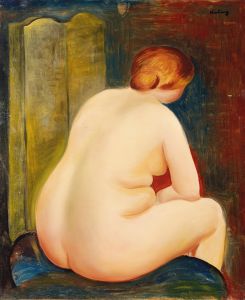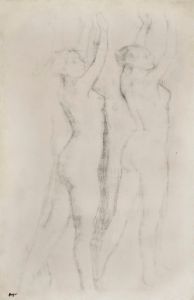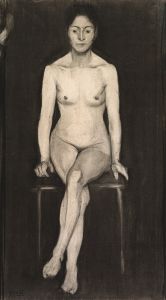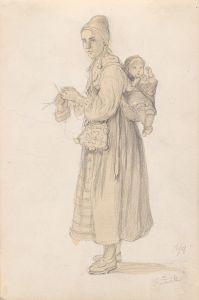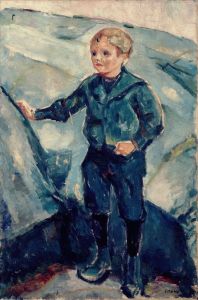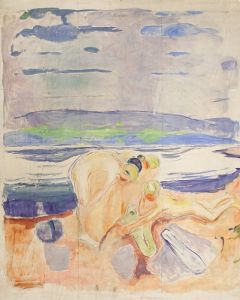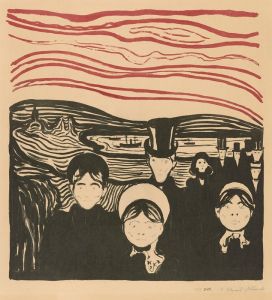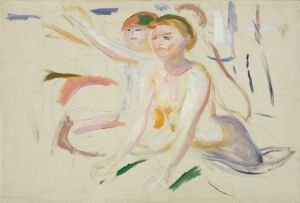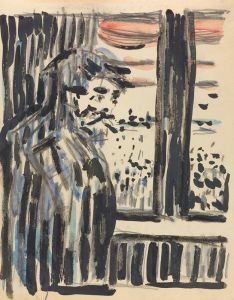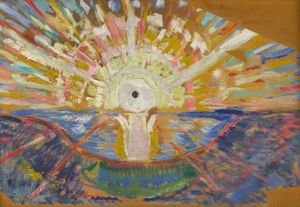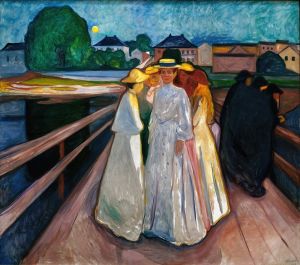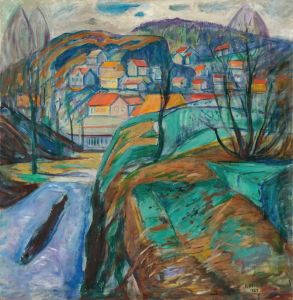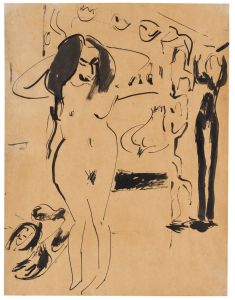
Bathing Women
A hand-painted replica of Edvard Munch’s masterpiece Bathing Women, meticulously crafted by professional artists to capture the true essence of the original. Each piece is created with museum-quality canvas and rare mineral pigments, carefully painted by experienced artists with delicate brushstrokes and rich, layered colors to perfectly recreate the texture of the original artwork. Unlike machine-printed reproductions, this hand-painted version brings the painting to life, infused with the artist’s emotions and skill in every stroke. Whether for personal collection or home decoration, it instantly elevates the artistic atmosphere of any space.
Edvard Munch, a renowned Norwegian painter and printmaker, is best known for his emotionally charged works that explore themes of human psychology, love, death, and existential anxiety. Among his extensive body of work, the painting Bathing Women (Norwegian: Badende kvinner) is one of his notable depictions of figures in nature, a recurring theme in his oeuvre.
Bathing Women was created in 1897 and reflects Munch’s interest in the relationship between humans and their natural surroundings. The painting portrays a group of women bathing in a serene, outdoor setting, with the figures depicted in various poses and stages of undress. The composition is characterized by Munch’s distinctive use of bold, expressive brushstrokes and a vivid color palette, which imbue the scene with a sense of vitality and emotional resonance. The figures are stylized rather than rendered with strict realism, a hallmark of Munch’s approach to capturing the essence of his subjects rather than their literal appearance.
The subject of women bathing in nature was a common motif in late 19th-century art, reflecting broader cultural and artistic trends of the time. In Munch’s work, however, the theme takes on a more symbolic dimension. The women in Bathing Women are often interpreted as embodying themes of purity, vitality, and the cyclical nature of life, though Munch himself did not provide explicit explanations for the painting’s meaning. The natural setting, with its lush greenery and flowing water, serves as a backdrop that emphasizes the connection between humanity and the natural world.
Munch’s artistic style during this period was heavily influenced by Symbolism and the broader European avant-garde movements of the late 19th century. His work often sought to convey emotional and psychological depth, rather than adhering to traditional notions of realism. This approach is evident in Bathing Women, where the interplay of color, form, and composition creates a mood that transcends the literal subject matter.
The painting is part of Munch’s broader exploration of themes related to the human condition, which he pursued throughout his career. While Bathing Women is not as widely recognized as some of his other works, such as The Scream or Madonna, it remains an important example of his ability to merge figuration with symbolic and emotional content.
Today, Bathing Women is housed in the Munch Museum (Munchmuseet) in Oslo, Norway, which holds the largest collection of Munch’s works. The museum provides valuable insight into the artist’s life and creative process, offering visitors the opportunity to view Bathing Women alongside other significant pieces from his career.





